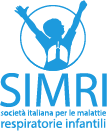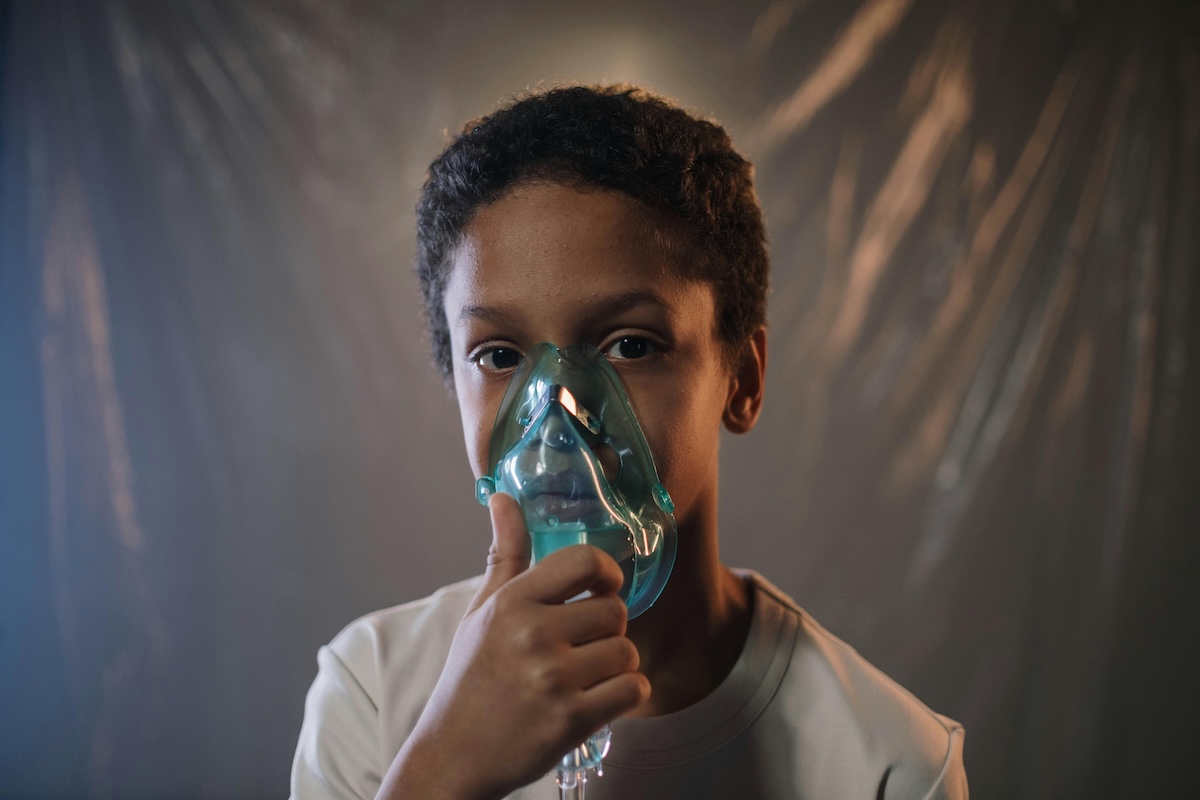Authors: Enrica Mancino, MD, The Maternal Childhood and Urological Sciences Department, Policlinico Umberto I, Sapienza University of Rome, Rome
Reviewer: Luigi Matera, MD, The Maternal Childhood and Urological Sciences Department, Policlinico Umberto I, Sapienza University of Rome, Rome
Children with chronic lung diseases may have low oxygen levels in their blood, and some may need supplemental oxygen to reach normal oxygen saturation levels. Specifically, children with chronic lung diseases such as bronchopulmonary dysplasia (BPD), cystic fibrosis (CF), sleep disorders, interstitial lung diseases, and pulmonary hypertension may require oxygen therapy. Supplemental oxygen helps protect against the negative effects of persistently low oxygen levels, aids the body in performing its functions more effectively, and allows children to remain more active.
Oxygen therapy in children: answers to frequently asked questions by parents
-
Why do some children need oxygen therapy?
The air we breathe contains about 21% oxygen, which is sufficient for children with healthy lungs. However, some children with chronic lung diseases are unable to take in enough oxygen through normal breathing; especially children who live at high altitudes or travel to high-altitude locations may need supplemental oxygen due to the lower oxygen percentage in the air. Oxygen therapy is indicated for these children to help them grow better.
-
How can I know if my child needs oxygen?
The pediatrician will assess whether your child needs supplemental oxygen by measuring oxygen levels (oxygen saturation or SatO2) using a device called a pulse oximeter. This device is applied to a finger or toe without causing pain and allows for continuous monitoring of oxygen saturation, even during sleep or physical activity. The goal is to maintain oxygen saturation at levels adequate for the body’s needs, usually 90-92% or higher. Your pediatrician will help determine the minimum levels your child can tolerate. Another test used to assess oxygen levels in the blood is arterial blood gas analysis (ABG).
-
How much oxygen should my child receive?
Oxygen is a medical treatment, and the doctor will prescribe the necessary amount, method, and flow rate to be administered. Your child may need different settings or flows for different activities, such as physical exercise, meals, and sleep. It is essential to use oxygen exactly as prescribed. Using too little can cause strain on the heart and brain, leading to fatigue, memory loss, or heart problems, while using too much can be dangerous, especially for premature infants’ lungs.
-
Will my child need oxygen during sleep?
During sleep, the depth and frequency of breathing decrease. If a child has low oxygen levels when awake, he will typically have even lower levels during sleep. In some cases, children who do not need oxygen when awake may require it during sleep. Your doctor will help you understand if and how much oxygen your child should use during sleep.
-
Will my child need oxygen during physical activity?
During physical activity, breathing becomes faster and deeper to take in more oxygen. To determine how much oxygen is needed during physical activity, your doctor may measure oxygen saturation during a walking or running test. For younger children and infants, this can also be assessed during play or breastfeeding.
-
How many hours per day will my child need oxygen?
Some children only need oxygen therapy during physical activity or sleep. However, in some cases, a child may require oxygen therapy 24 hours a day. Sometimes, your child may seem fine and show no signs of low oxygen levels, such as blue lips or skin. This does not always mean that his oxygen levels are optimal. It is better to check oxygen levels if you are unsure how much oxygen your child needs. Sometimes, a pulse oximeter can be provided at home to monitor oxygen therapy.
-
Will my child always need oxygen?
Your child may be able to reduce or stop oxygen therapy if his lung condition improves. However, many children who need supplemental oxygen for chronic lung disease will continue to use it for a long time. Some may only use it during exacerbations or infections. As a parent, you should never decide on your own to reduce or stop your child’s oxygen therapy; if you think it is necessary to re-evaluate his therapy, consult your doctor.
-
What are the different types of oxygen delivery systems?
Oxygen can be delivered from three sources: an oxygen concentrator, a liquid oxygen system, or pressurized cylinders. Your child will need to use nasal cannulas or a facial mask (or a tracheostomy mask for children with a tracheostomy), which connect to the oxygen source through a small tube. The best device for your child depends on how much oxygen he needs and what activities he performs.
-
How can I clean my child’s oxygen delivery devices?
Clean the nasal cannulas or facial mask with warm water and soap at least once a week, plus as needed. Oxygen machines and pressurized cylinders can also be cleaned. Ask your supplier and your doctor how to wash the equipment. Replace the nasal cannulas or facial mask every 1-3 months or after illness. It is good to always have extra nasal cannulas and a backup oxygen tube for safety.
-
What should I use if my child’s nose or lips become dry and irritated?
Many people find it more comfortable to breathe humidified oxygen rather than dry oxygen. However, even humidified oxygen can cause nasal irritation, bleeding, or congestion. The oxygen humidifier device contains distilled water and connects to the oxygen delivery device. It is not recommended to use petroleum-based products, such as Vaseline, if the nose is dry or irritated. Instead, use saline-based products like nasal sprays, mouthwash, or nasal gels.
-
How can I help my child feel more comfortable using oxygen?
Some children resist using nasal cannulas or facial masks. Sometimes it helps to let them play with a mask, see one on other children, or put one on a doll or peluche they love. Encourage your child to wear the mask or nasal cannulas. If your child’s nose gets irritated from the cannulas, you can switch to a facial mask. Speak to your doctor if your child has trouble tolerating oxygen therapy.
-
What should I watch out for to know if my child is worsening or needs more oxygen?
There may be periods when your child needs more oxygen. If you have a pulse oximeter at home, you can use it to check oxygen saturation. Your doctor can help you understand how much oxygen to administer to reach normal oxygen levels. Additionally, you should watch for signs and symptoms suggesting that your child’s condition is worsening. These include:
- Headache
- Increased coughing, shortness of breath, or difficulty breathing
- Unexplained fatigue
- Child is less active than usual or needs to stop more often during play to rest or catch his breath
- Blue lips or nail beds
-
Should I worry about oxygen exploding or catching fire?
Oxygen itself does not catch fire or explode, but it is flammable. Never smoke near oxygen devices. Keep oxygen at least 2 meters away from open flames. Avoid using friction-powered toys that emit sparks. Secure all cylinders by placing them on walls or in carts in safe areas. Remember: oxygen is safe and helpful when used according to the rules.
-
How can I leave the house for errands or doctor visits with my child who needs oxygen therapy?
Home care services will provide small oxygen cylinders that you can use when you go out. Be sure to have enough oxygen in case of delays or emergencies. It is a good idea to keep emergency contact numbers (doctor, oxygen supply company, local hospital) on hand just in case. To transport oxygen cylinders, secure them firmly to the back seat floor and leave a window open at least one centimeter.
-
What should I do if my child is traveling out of town?
Your child can travel with oxygen therapy, but it requires good planning. Check your travel company’s (airline, train, bus, ship) regulations regarding the transport of oxygen. Contact your oxygen supplier to arrange for supplemental oxygen during the trip. Make sure you have enough oxygen in case of emergency or delays. Carry a copy of your child’s prescriptions for oxygen therapy and medications. Always have emergency contact numbers (your doctor and oxygen supplier) and the names and contacts of hospitals and doctors in the area where you’re traveling, just in case.
KEY POINTS
- Oxygen is a medical treatment. Use oxygen exactly as prescribed by your pediatrician.
- Contact your pediatrician if your child shows any of these symptoms: headache, shortness of breath, fatigue or lethargy, irritability, loss of appetite, blue lips or nail beds.
- Oxygen is safe when used correctly. Do not smoke near oxygen, and do not keep oxygen near open flames or other heat or fire sources.
- Avoid using friction-powered toys that emit sparks.
- Create an action plan with your healthcare team to manage emergency situations, such as power outages.
No metadata found.



